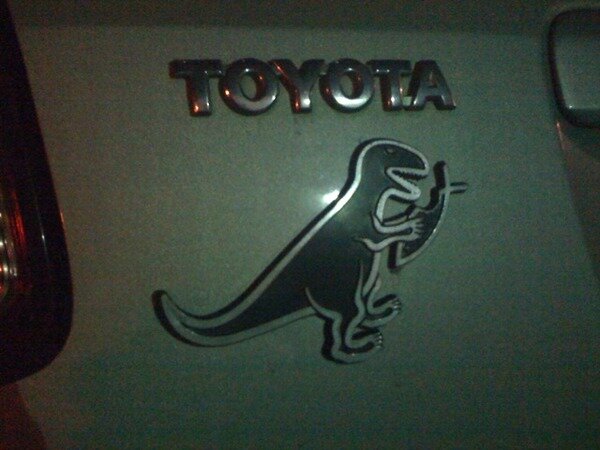Not everyone's ready to look at evolution - the second explanation for the existence of humans. Let alone the third explanation. Thu 28 April 2022

Note left on an evolutionist's car. Source

Reason note was left on evolutionist's car. Source
Hybrid Human Theory Summarised:
Eugene McCarthy said the evidence suggests humans are hybrids.
-
The origins of human DNA are hard to explain. Human DNA is very similar to chimpanzee DNA. But humans are not very similar to chimpanzees.
-
We and our ancestors are two chromosomes short of the primate payload of 48 chromosomes. Geneticists ask: how did that happen?
-
Partly because, arguably, our chromosome 2 is a fusion of two chromosomes.
From The Origin of the Human Species: a Chromosome Fusion?:
there is a possibility that the chromosome fusion that originated our chromosome 2 may have been associated with the appearance of our distinctive characteristics. Thus, several genes in our chromosome 2 that are found near the area of chromosome fusion are expressed more intensely in our species than in that of large apes. These genes are expressed, above all, in highly significant tissues and organs, such as the brain and the gonads.
Speaking of gonads, from Human Origins: Are We Hybrids?:
differences in parental chromosome counts, even rather large ones, do not preclude the production of fertile hybrids.
My current work documenting hybridization among mammals shows that partially fertile natural hybrids are common...
...crosses producing partially fertile hybrids are about eight times as common as crosses known to produce sterile ones
most people base their ideas of hybrids on the common mule (horse x ass), which is an exceptionally sterile hybrid.
From The Other Parent:
it’s clear that the other parent in this hypothetical cross that produced the first human would be an intelligent animal with a protrusive, cartilaginous nose, a thick layer of subcutaneous fat, short digits, and a naked skin. It would be terrestrial, not arboreal, and adaptable to a wide range of foods and environments. These traits may bring a particular creature to mind. In fact, a particular non-primate does have, not only each of the few traits just mentioned, but every one of the many traits listed...
Also difficult is where human intelligence came from. Massive, folded human brains are understood to have come from the mutation that created gene ARHGAP11B. But what caused the mutation?
Also, hard-working brains overheat. Humans and pigs share a brain-cooling mechanism. From The Cranium and the Brain:
My first inkling that such a [cooling] mechanism might exist came when an initial investigation of skin structure revealed that humans and pigs share an unusual thermoregulatory system not seen in chimpanzees and other nonhuman primates.
[This mechanism] actively pumps cool blood to the brain from the surface of the cranium. My first inkling that such a mechanism might exist came when an initial investigation of skin structure revealed that humans and pigs share an unusual thermoregulatory system not seen in chimpanzees and other nonhuman primates.
An as-yet unexplained leap in 18th century medical science also hints that better cooling became a key product goal for human brains. See Dating the Intelligent Pig.
The long version:
Links to Eugene McCarthy's theory that humans may be hybrids:
- Human origins: Are we hybrids?
- The Other Parent
- The Bipedal Ape
- The Cranium and the Brain
- Additional Evidence
McCarthy doesn't get into how human hybridisation occurred. But he discusses it in a very listenable set of interviews with Brothers of the Serpent podcast:
Summary:
McCarthy highlights two mistakes in humans' understanding of hybridisation. They believe:
- hybrids are sterile. True(ish) for mules but not all hybrids.
- individual species cannot inter-breed. Not true.
© All rights reserved. The original author retains ownership and rights.
More of this investigation:
You're Not Real Are You?